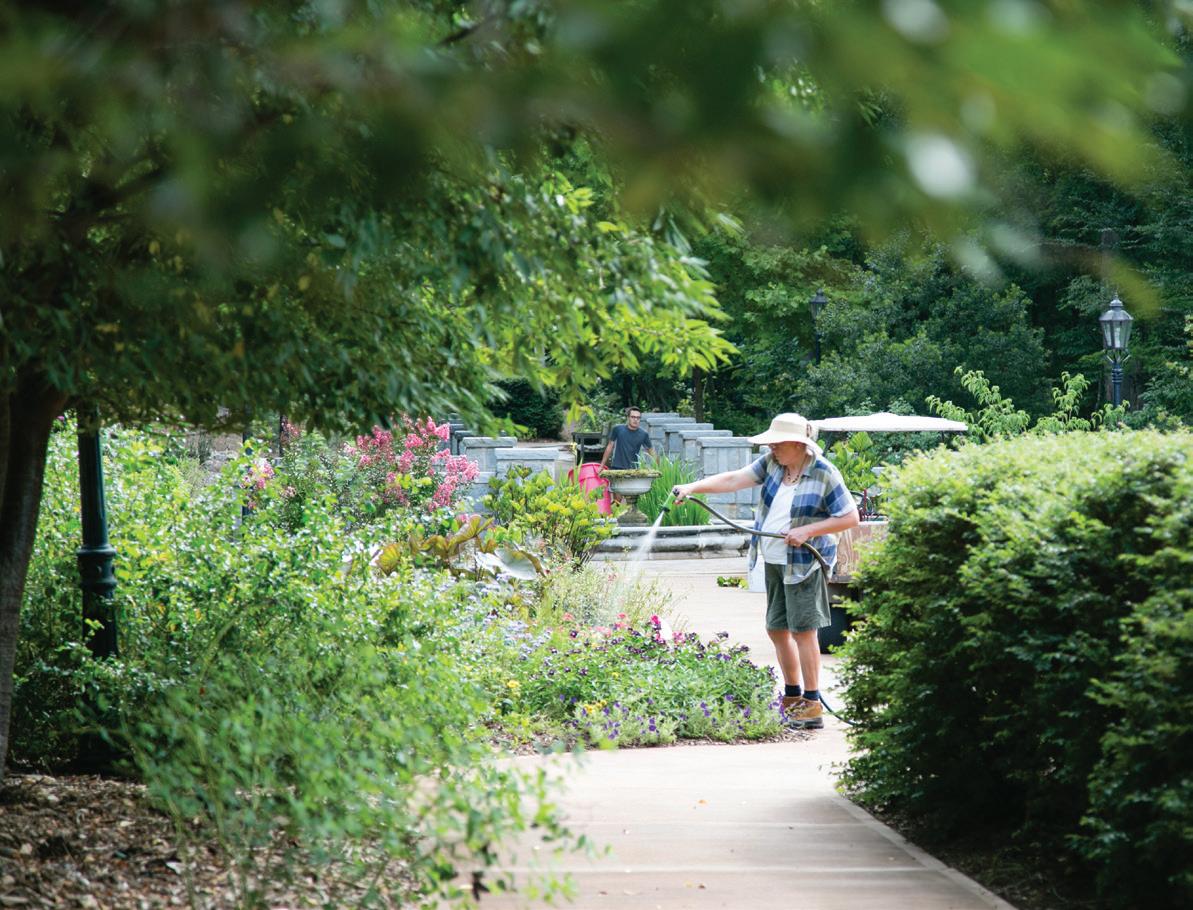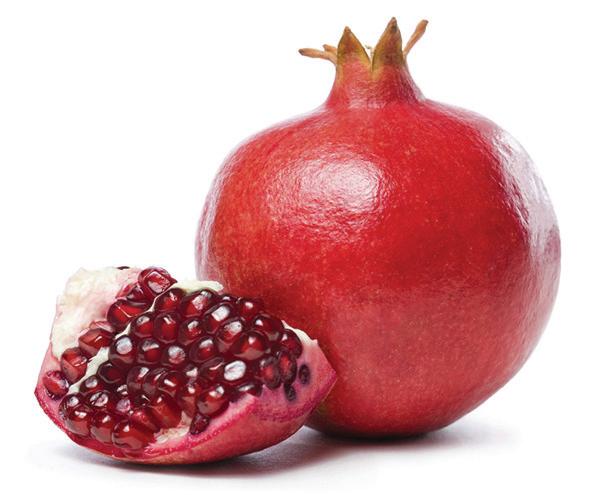
6 minute read
HORTICULTURE
Gareth Crosby, Heritage Garden curator
The Weaver’s Garden is a relatively new addition to the Heritage Garden at the State Botanical Garden of Georgia, but its popularity is growing with the increased interest in natural dyes. The garden features plants that are used to produce either a natural dye or a natural fiber. There are also some plants included like sumac (Rhus spp.) that have tannins used in the mordanting or fixative process for dying natural fibers like silk, cotton, wool and linen.
Advertisement
Natural dyes are derived primarily from plants but also metals, minerals and organic materials like bat guano. The element cadmium, for instance, can be ground to make bright reds, oranges and yellows. The semiprecious stone, Lapis lazuli, is ground to create deep ultramarine blues.
Tyrian purple, also known as royal purple or imperial dye, is a secretion produced by several species of predatory sea snails. Extracting this dye involves tens of thousands of snails and is collected either by “milking” the snails or by collecting and crushing them.
Notably, cochineal, a brilliant red dye, is derived from tiny scale bugs (Dactylopius coccus) that feast on cacti in Central America. While some natural dyes are produced at a very high cost, most plant-based natural dyes are inexpensive and easy to obtain from easy-to-grow plants, like those found in the Weaver’s Garden.
Why go back to natural dyes? There is a growing interest in producing more natural dyes as research is pointing to the unhealthy and environmentally dangerous side effects of popular chemical dyes.
At the State Botanical Garden of Georgia, we focus on plant-based dyes. Examples of the plants we grow include: Indigo (Indigofera suffruticosa) – blues Madder (Rubia tinctorum) – pinks, reds, oranges Dyer’s chamomile (Anthemis tinctoria) – yellows Pomegranate (Punica granatum) – pinks Weld (Reseda luteola) – yellow Woad (Isatis tinctoria) – blues Elecampane (Inula helenium) – gray
The Weaver’s Garden
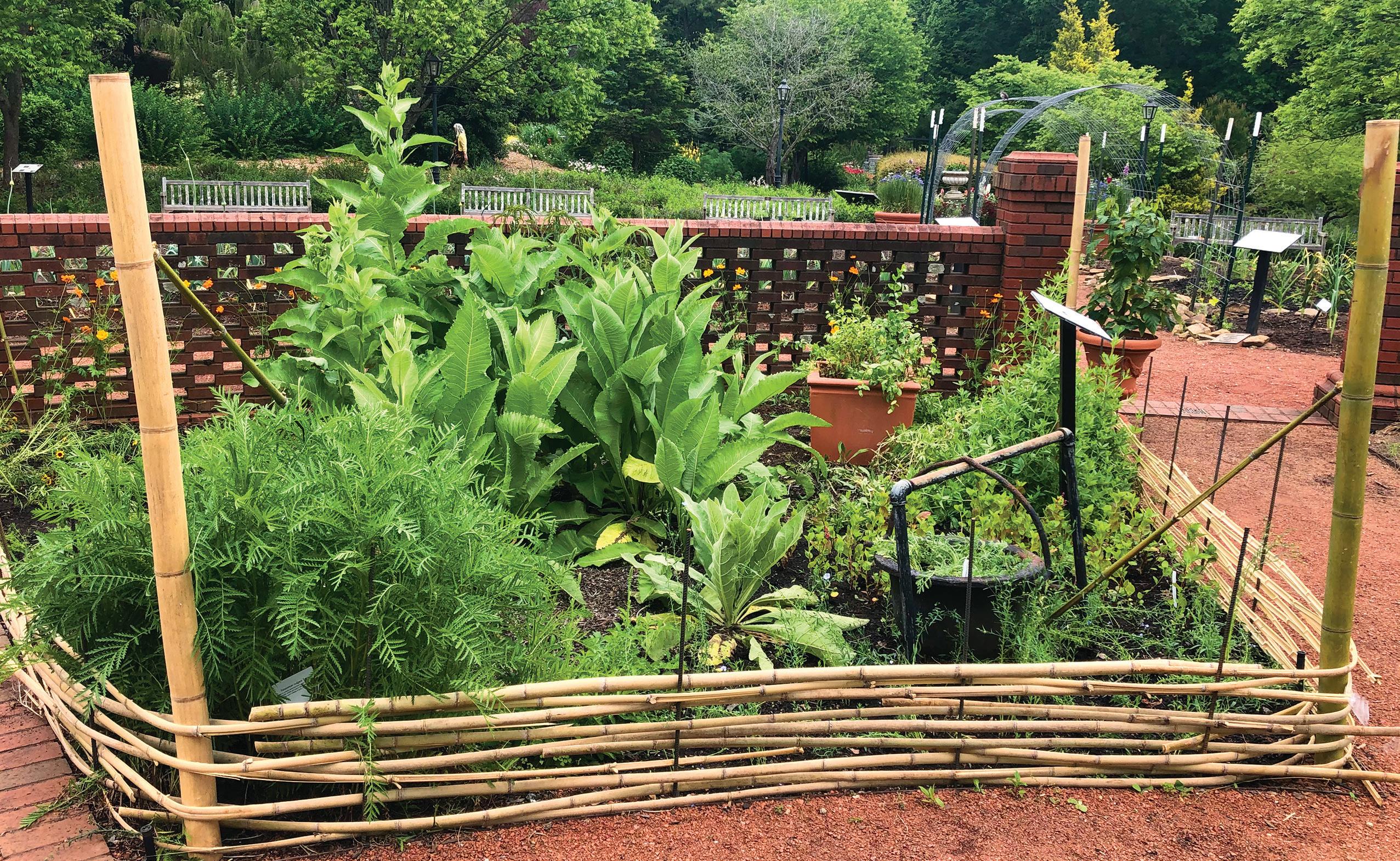
The slow movement, a movement against “fast” and ecologically destructive life choices, is no longer restricted to food and drink, but also includes slow travel, slow cities, slow fashion and more. Natural dyes fit nicely into the slow fashion movement as artists, scientists, small business people and consumers recognize the lesser impact these products have on the earth.
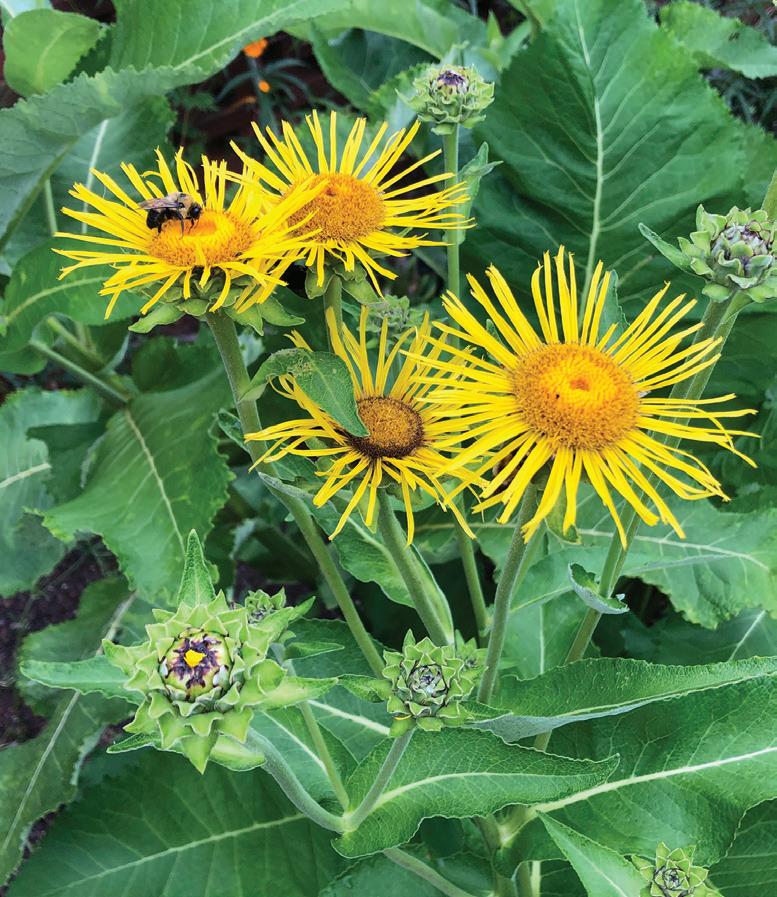
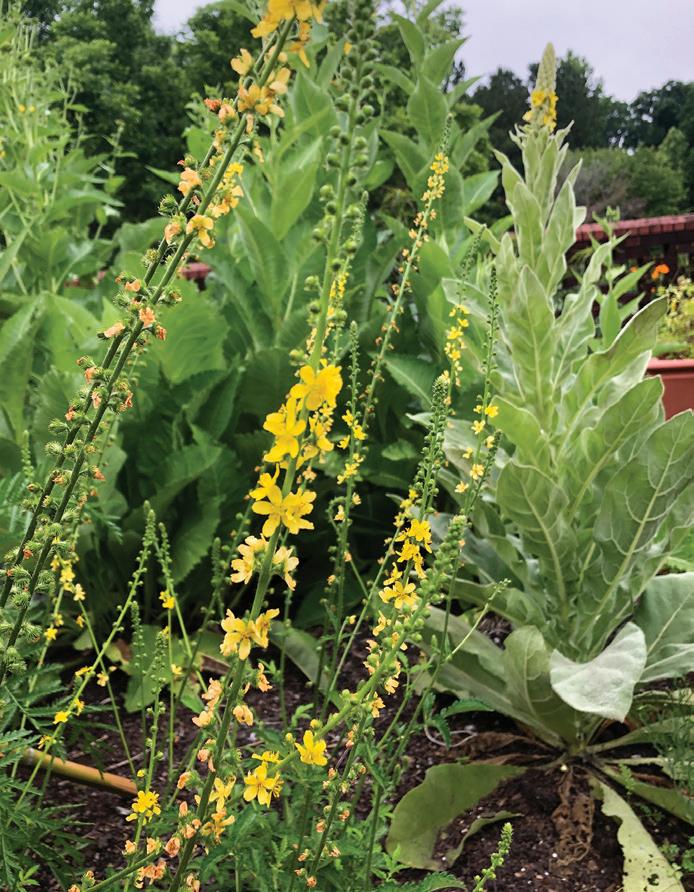
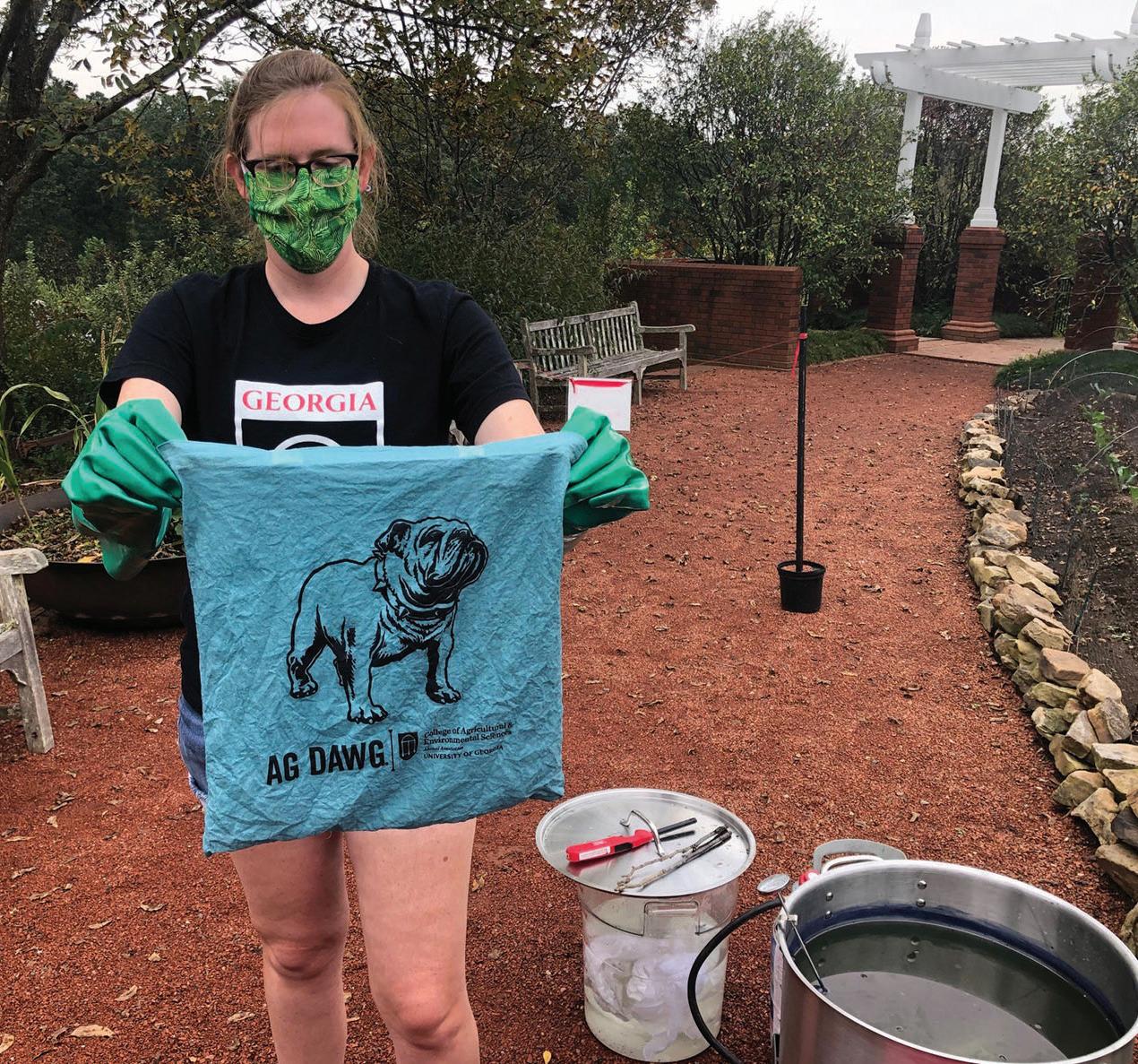
Learning by LeadingTM student Joanna Roberts dyes a UGA cloth bag with indigo dye, Indigofera suffruticosa, which is grown in the Heritage Garden.
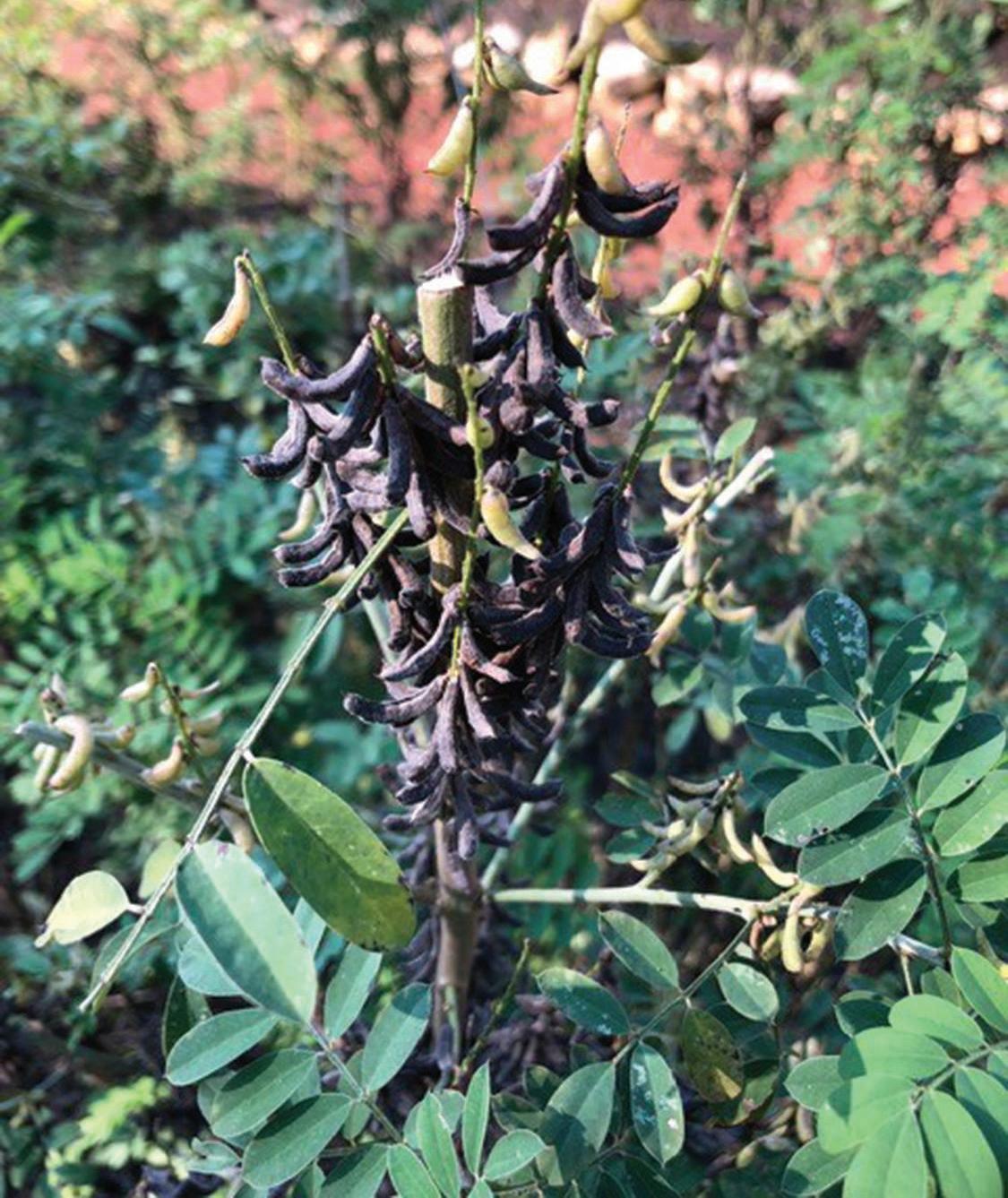
We also grow fiber plants like flax (Linum usitatissimum) which becomes linen when processed and cotton (Gossypium barbadense) which is spun into yarn. Natural dyes work best with natural plant-based fibers such as cotton, linen, jute, ramie and sisal, as well as protein fibers such as wool and silk.
One natural dye that stands out from the rest in many ways is indigo. Blue is such a rare color in nature that it’s quite fascinating to find there are more than 50 different plants around the world that produce a substantive amount of blue dye when processed. There are several species of indigo (Indigofera sp.) found around the world, as well as Japanese indigo (Persicaria tinctoria), woad (Isatis tinctoria), dyer’s oleander (Wrightia), (Strobilanthes cusia) and (Marsdenia tinctoria). You can extract a blue hue from many different plant families, including the bean family (Leguminosae), cabbage family (Brassicaceae) and rhubarb family (Polygonaceae). dye. The indigo vat is a remarkably complicated process of fermentation, pH adjustment and redux reaction. Most dyes are chemically bonded into the fibers of the cloth or yarn with the help of a mordant, however, indigo molecules attach to the surface of the fiber with a molecular bond, and subsequent dips of the fiber into the vat allow more layers of the pigment to attach. Indigo is insoluble in water and does not fade with exposure to light, but it can rub off which is why the knees of our jeans fade with time and use.
As our plant sources of dye and fiber grow, so too will our workshop offerings. We have held dye classes with local natural dye scholars Donna Hardy and Beatrice Brown. Brown teaches a class called “From Compost to Dying” where she shows students the many kinds of fruits, vegetables and flowers that are easily used for natural dye. Hardy’s class is all about indigo: its history and its chemistry.
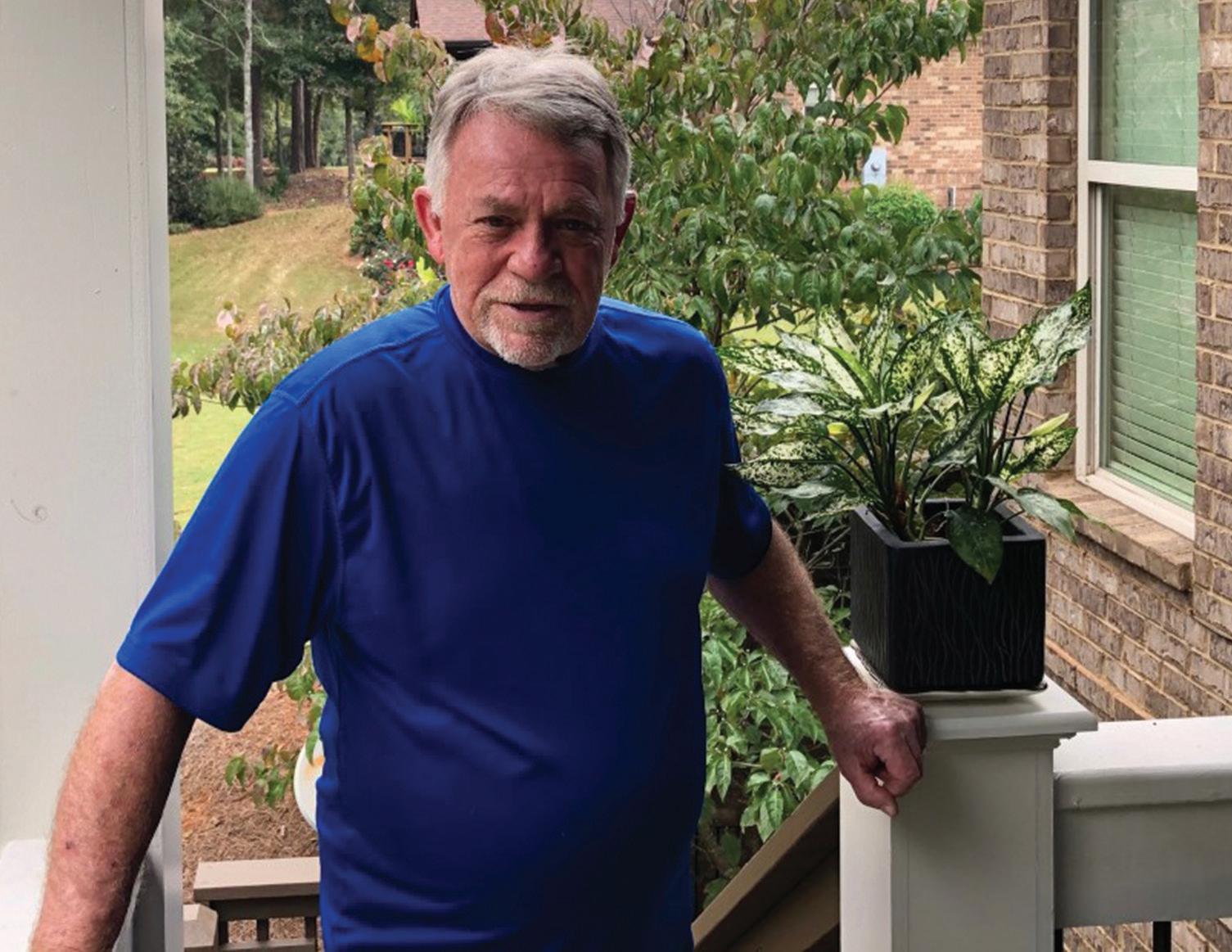
Ken Davis
We are thrilled to highlight the contributions of Ken Davis, one of our many seemingly tireless horticulture volunteers. After retiring from a career in sales in 2018, Davis began volunteering at the State Botanical Garden alongside Gareth Crosby, Heritage Garden curator, and Jim Moneyhun, curator of the Flower Garden.
Davis’ fascination with plants led him to complete his Master Gardener training in 2020, but his vegetation education didn’t stop there. He has continued to learn all he can while being of great assistance to the curators, whom he credits as being great teachers. It’s not just the botanical garden that benefits from Davis’ hard work, his own garden at home is flourishing, too.
When asked about his favorite project at the garden, Davis answered bulb planting in the fall. He throws himself into this work with gusto, and even brings some of his own tools from home to assist Crosby in planting thousands of tulips. Davis said to avoid having squirrels dig up your bulbs, place a small piece of chicken wire in each hole as you go.
His advice to those interested in volunteering with the garden curators is to be realistic. Often gardening means getting hot and sweaty in the summer, so know what you are getting into and prepare accordingly. Davis said his goal is to help the curators in any way possible. He arrives early and is always ready to tackle any job given to him. He helps maintain the gardens by pulling weeds, planting bulbs, transplanting, pruning, mulching and many more tasks. It’s clear that the curators appreciate his help because they look forward to mornings when they get to work with him.
Thank you, Ken Davis, for your incredible service to the State Botanical Garden.
Volunteer opportunities are available for many positions. Please contact Andrea Fischer for more information at 706-542-6195 or afischer@uga.edu.
Watering Wisely
Check all your sprinklers, hoses, faucets and all other irrigation connections before the spring passes. Leaks in your lines will cost you dearly and can become larger problems if not addressed.
Deep watering is a technique that encourages deep root growth and helps plants survive times of drought. Instead of a quick sprinkle or a fast blast, allow your spray nozzle to release a rain-like shower and then water your garden by walking back and forth many times.
Test the depth to which your water has penetrated by sticking your finger into the soil, down to the last knuckle. If it’s dry at any point, keep going until you can no longer see a difference when you test with your finger.
Never stand in one place with your hose and let the water pool on the surface of the soil. Pooling water speeds up the creation of soil crust—a hard surface that repels water, unlike freshly turned earth.
If you find that your soil has developed a crust from overhead watering or rain, take a hoe or a garden fork and scratch the surface. This will break the seal of fine soil particulates that have clogged the soil pores.
